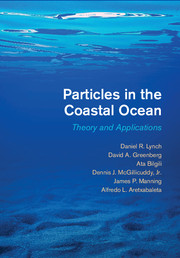Book contents
- Frontmatter
- Dedication
- Contents
- About the Authors
- Preface
- Acknowledgments
- List of Acronyms
- Definitions and Notation
- Introduction and Scope
- Part I Background
- Part II Elements
- 7 Meshes: Interpolation, Navigation, and Fields
- 8 Particles and Fields
- Part III Applications
- Part IV Appendices
- A Series, Sums, Limits
- B Complex Numbers
- C Wiener Integrals
- D Rates and Rate Limiters
- E Diffusion Solutions
- F Covariance Matrix for Shear and Convergence
- G Summary – ARn Recursions
- H Distribution Properties for Linear Triangles
- Bibliography
- Index
- Plate Section
7 - Meshes: Interpolation, Navigation, and Fields
from Part II - Elements
Published online by Cambridge University Press: 05 January 2015
- Frontmatter
- Dedication
- Contents
- About the Authors
- Preface
- Acknowledgments
- List of Acronyms
- Definitions and Notation
- Introduction and Scope
- Part I Background
- Part II Elements
- 7 Meshes: Interpolation, Navigation, and Fields
- 8 Particles and Fields
- Part III Applications
- Part IV Appendices
- A Series, Sums, Limits
- B Complex Numbers
- C Wiener Integrals
- D Rates and Rate Limiters
- E Diffusion Solutions
- F Covariance Matrix for Shear and Convergence
- G Summary – ARn Recursions
- H Distribution Properties for Linear Triangles
- Bibliography
- Index
- Plate Section
Summary
Operating with existing gridded fields is the subject of this chapter.
Continuous fields are assumed in almost all coastal ocean discretization methods in operational practice. There are important exceptions, especially for vector fields in certain contexts, or at steep fronts that are essentially unresolvable any other way. But as a baseline, gridded fields will be assumed continuous; if not, then special instructions about their use would need to be appended to them. We briefly visit geometry, interpolation, and navigation on grids.
The Horizontal Mesh
7.1.1 Triangles
The triangle is the most flexible unit of horizontal discretization. We describe it first, and then describe the quadrilateral. Both present the same options in the vertical direction.
7.1.2 Geometry
Simulation of natural systems requires that we accommodate the geometric needs first – the coastal boundary is maybe the most obvious; a close cousin is the bathy-metric realism. The unstructured mesh of triangles achieves much of what is needed here, in the sense of making numerical length scales and orientations “fit” the natural ones.
Examples of triangular meshes appear in Figures 7.1 and 7.2. Resolution matters! In the coastal ocean, the physics and chemistry of human interaction can be quite local; and all data are local and include near-field effects. The shelf-coast interactions occur over a wide range of length and time scales, all demanding resolution. Though these meshes have been important, time will render them obsolete due to inadequate resolution by then-current expectations. The truism – there is never enough resolution!
These are unstructured meshes – all the space is filled with contiguous, non-overlapping triangles of locally appropriate size. Beyond that, there is no predetermined pattern constraining the discretization. Each triangle will be home to all that occurs there – inputs, coefficients, discretization, and results – each is local. The whole picture is the union of all the individual triangles. Noteworthy here is the natural ability of such an unstructured mesh to fit the coastal geometry and the bathymetry, and any boundary where important PDE information needs to be specified.
- Type
- Chapter
- Information
- Particles in the Coastal OceanTheory and Applications, pp. 227 - 270Publisher: Cambridge University PressPrint publication year: 2014



